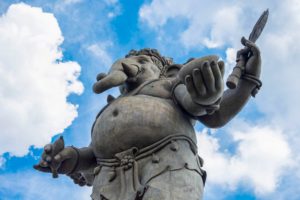Support Hidden Compass
We stand for journalism, science, history, and hope. Make a contribution to Hidden Compass and stand with us.

Temples dot the landscape of Myanmar, where nearly 90 percent of its 55 million people are practicing Buddhists. PHOTO: DR. GILAD FISKUS.
The procession moved past. Young men and boys in ornate silk with golden accents rode past me atop decorated horses. Men walked alongside them, shielding the boys from the sun with colorful umbrellas. I raised my camera and snapped a photo of a boy as he looked back, clad in turquoise silk and shimmering sequins, one eyebrow raised a little higher than the other. Soon, his head would be shaved. The silk and sequins would be traded in for simple robes. Soon, he would be living a monastic life. Would he be part of the one percent who stays?
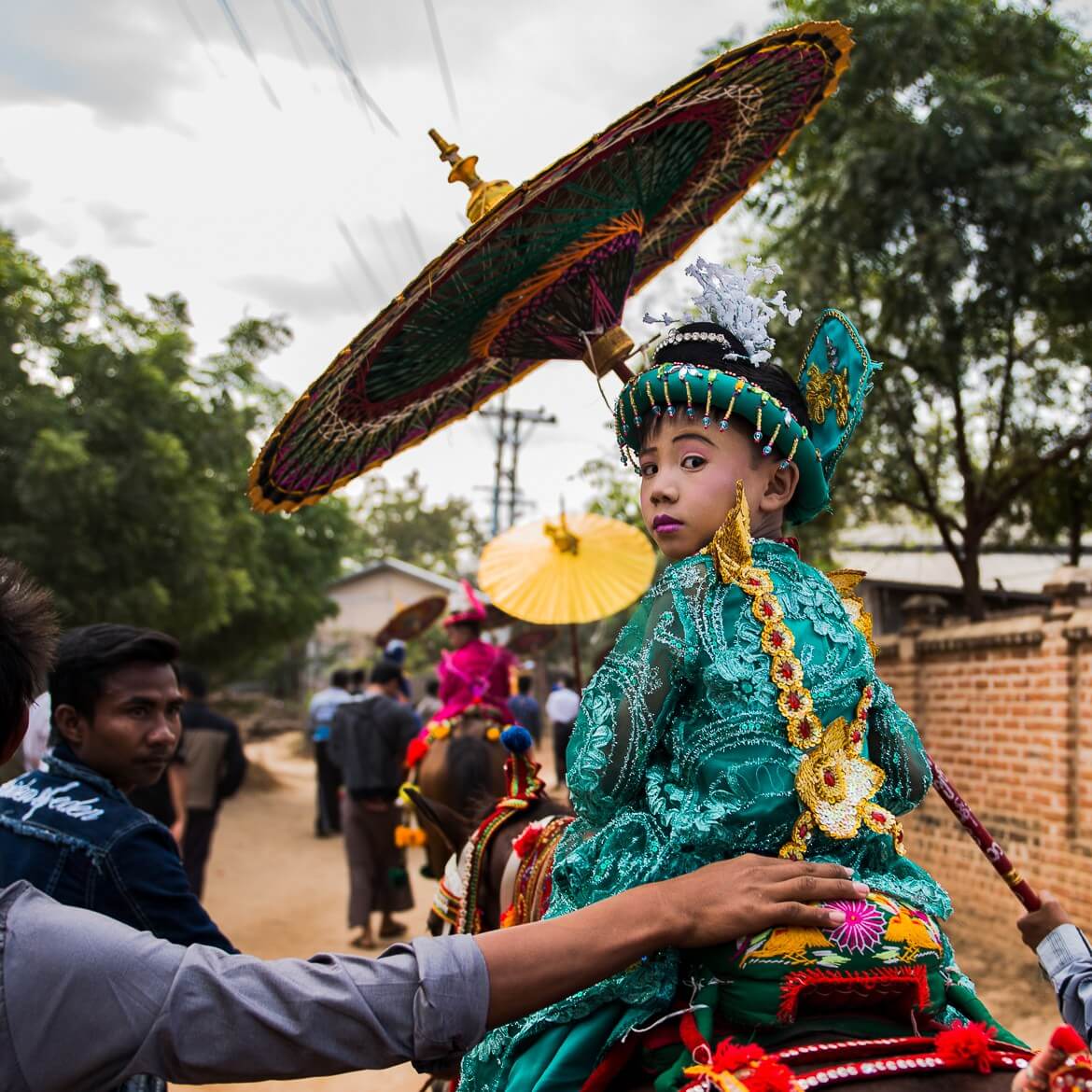
Nearly all boys from 10 to 20 in Myanmar participate in Shinbyu, which celebrates the ordination of novice Buddhist monks. However, only about one percent adopt a monastic life. PHOTO: DR. GILAD FISKUS.
This was Shinbyu — a ceremony marking the ordination of Myanmar’s novice Buddhist monks — and it brought to mind what I’d learned of Prince Siddhartha Guatama’s departure from his comfortable royal life, trailed by proud parents carrying monastic robes, and sisters carrying lotus blossoms, as he set out on a quest for enlightenment. That prince would eventually become the Buddha, whose teachings laid the foundation for Buddhism itself. I watched with admiration as the parade ceased at the monastery.
The concept of Shinbyu seems foreign to me, but it is ingrained in Myanmar. Every boy between the ages of 10 and 20 years old — and sometimes as young as seven — participates in the ceremony which introduces them to monkhood. They are obliged to become novice Buddhist monks at least once in their lives and spend time in a monastery, becoming familiar with the fundamentals of Buddhism. They are free to leave the monastery and return to their families at any time. Most boys stay for a week or two, though some stay for years, learning Buddhist scripture. Just one percent adopt Buddhist monasticism as a way of life.
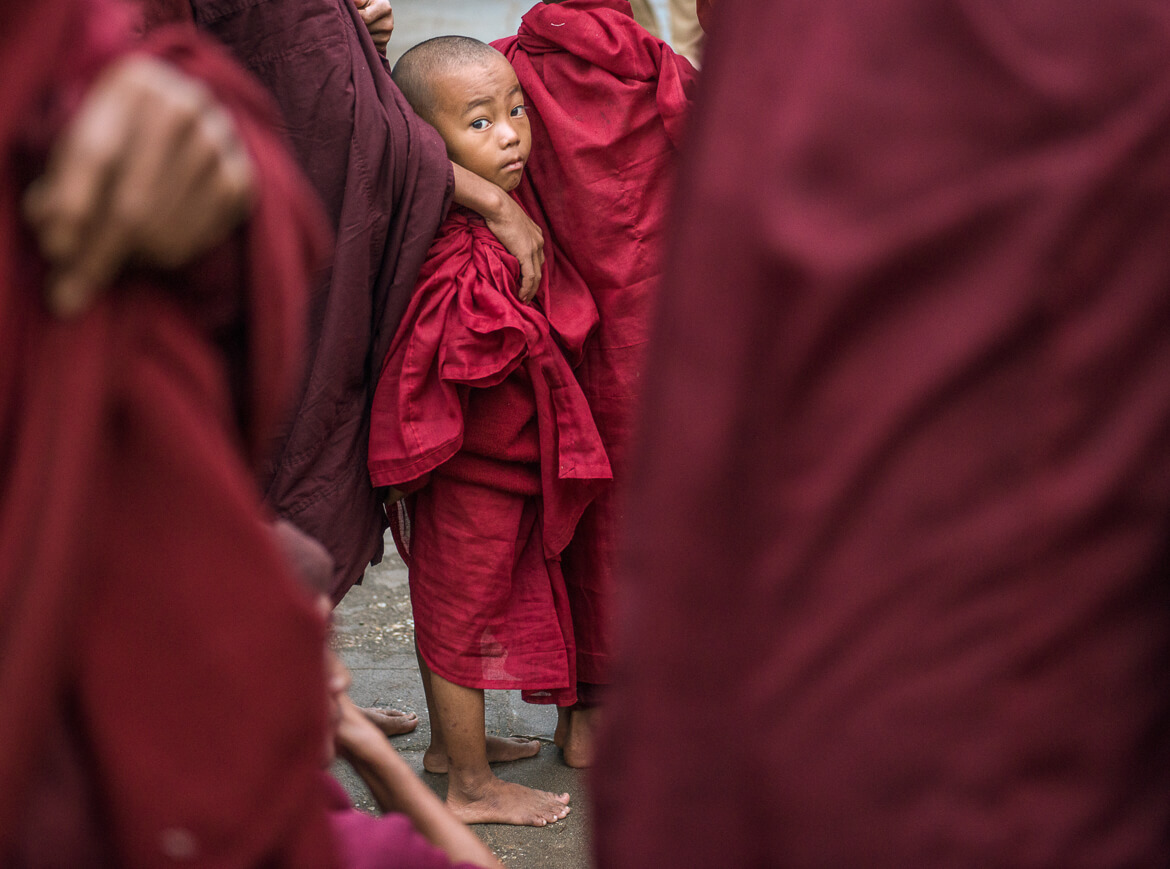
The journey to becoming a monk begins early for some boys in Myanmar. PHOTO: DR. GILAD FISKUS.
For parents in Myanmar, it is their duty to send their male offspring into novice monkhood. Parents without sons often seek an orphan boy to help through the process. As I spoke to several parents, it became clear that they took great pride in encouraging at least one son to join the monastic order permanently and potentially benefit from free, quality education.
“We’re so proud to lead our descendants towards the spiritual world of Buddhism. We believe this is how better, more modest, and happier people are made,” one man said.
As the parade reached the monastery, a prayer service was led by the head monk who granted the excited boys the privilege of wearing the red robes. As an outsider, the robes seemed to symbolize belonging and community as well as faith. And to be honest, I was a little envious. I compared the lives of these boys, who were excited about entering this spiritual world of humility, to the lives of my own children, who seem to only get this excited over more material things, and wondered if maybe my children were missing out on something.
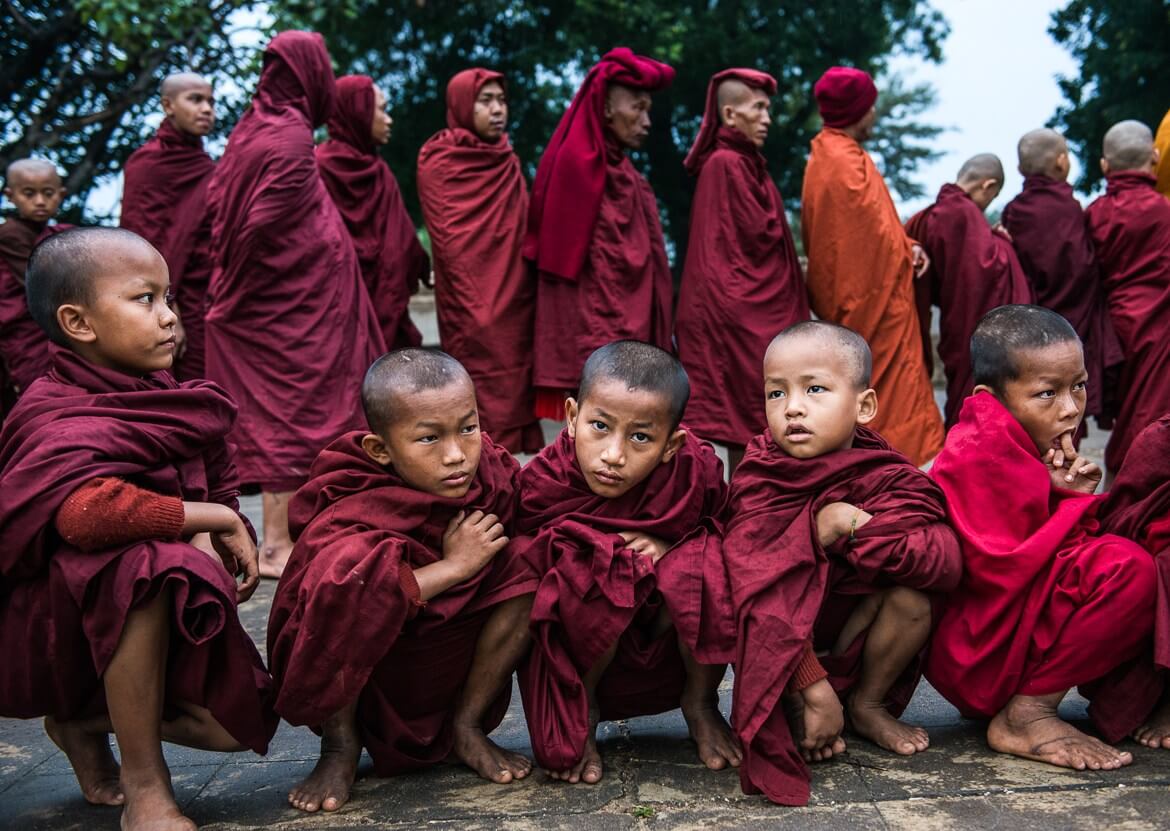
Shinbyu culminates with boys donning red robes. To writer Dr. Gilad Fiskus, the vestments represent belonging and community, as much as faith. PHOTO: DR. GILAD FISKUS.
~~
The influence of Buddhism was everywhere as I traveled the length and breadth of Myanmar. In the nation of nearly 55 million people, some 90 percent are practicing Buddhists, making Myanmar the most religious Buddhist nation in the world.
In Bagan, I viewed the thousands of temples, stupas, and pagodas spread across the plains. Theravada Buddhism originated there and is the predominantly practiced sect in Myanmar. At one time, more than 10,000 temples dotted the landscape, but fewer than a quarter of those remain today due to earthquakes. Still, the impact is undeniable.
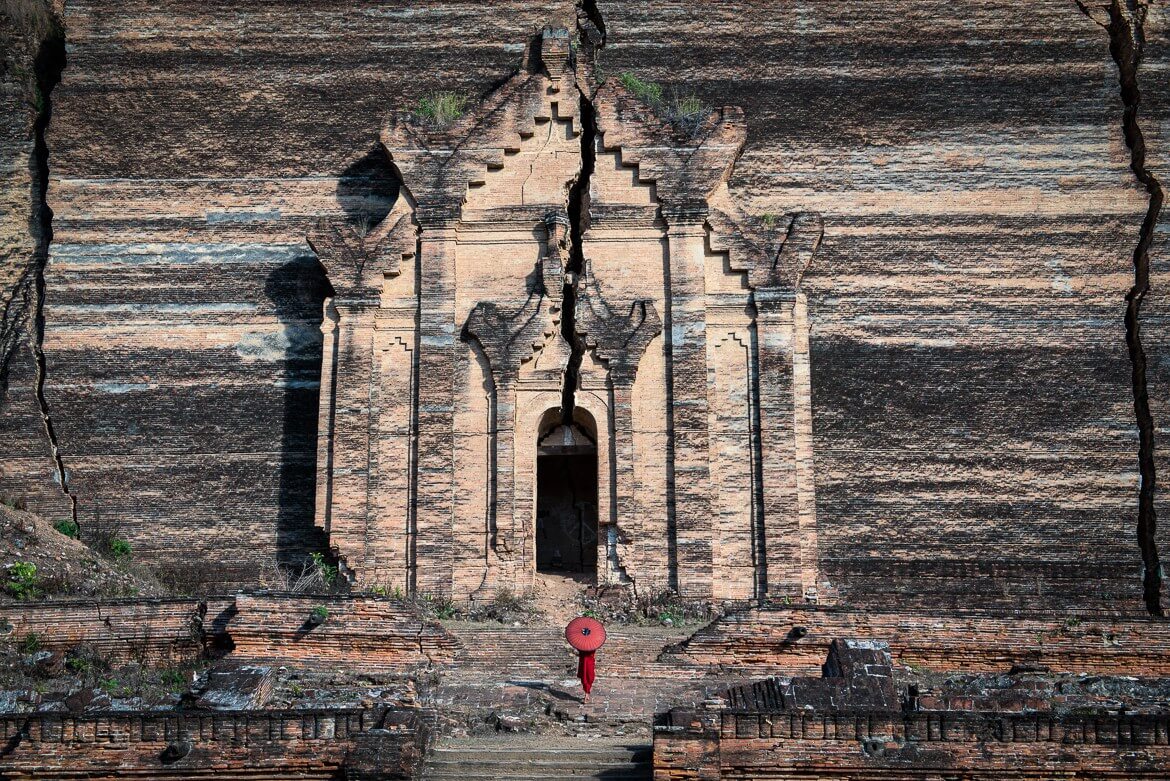
Time and nature have reclaimed many of Myanmar’s temples, pagodas, and stupas. PHOTO: DR. GILAD FISKUS.
At the Ananda Pagoda Festival, majestic and seemingly infinite waves of red-robed monks enveloped me as they came in from the Bagan countryside. One of the largest and most sacred gatherings of the year, the festival is held to worship and raise funds for faithful Buddhist monks and to enhance one’s own spiritual path in Buddhism. The alms bowls brimmed with food and soap and money. The monks brimmed with modesty and humility and patience. The frosty air, the bustling crowd, the trickling rain — none of it seemed to affect their disposition. Even my intrusion, camera in hand, was accepted with politeness and kindness. The moment felt sacred.

At Bagan’s annual Ananda Pagoda Festival, monks from far and wide gather — regardless of the weather — to receive alms. PHOTO: DR. GILAD FISKUS.
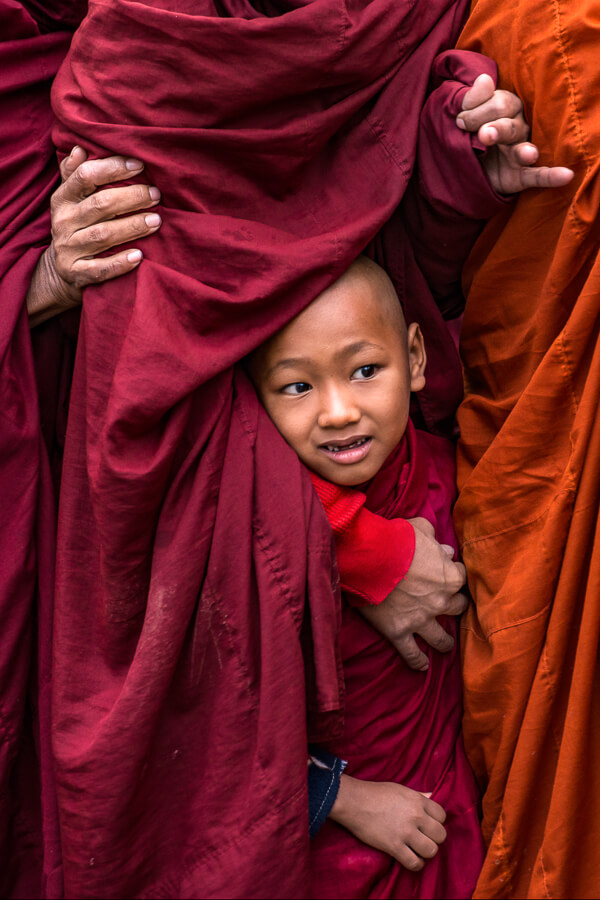
The Ananda Pagoda Festival brings monks of all ages to Bagan. PHOTO: DR. GILAD FISKUS.
~~
Back in the monasteries, the Ananda Pagoda Festival gave way to ordinary life.
In Shwegu Pahahita monastery in Bagan and Nandamu Hlaing Gu in Yangon, I observed the daily lives of monks as though I was watching a (mostly) silent documentary. The sonorous ring of a gong ushered in a new day around 4 a.m., followed by prayers and chores — gathering water, cooking meals, and cleaning. Groups of young men — many of whom had no doubt entered the monasteries recently via Shinbyu ceremonies — rushed by me on their way to prayer sessions and lessons in the mornings and afternoons. Everywhere I looked, the monks were in constant motion — orderly and utterly silent.
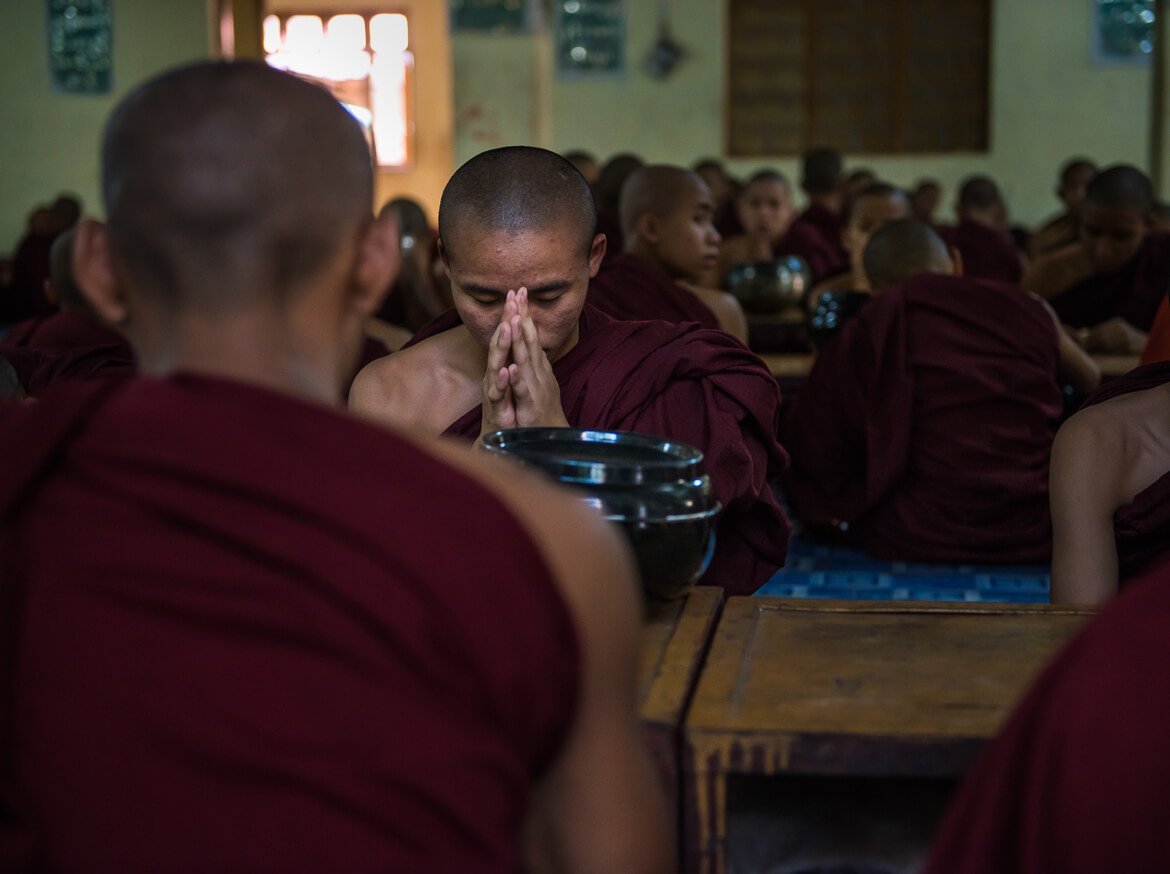
A monastic life typically begins at 4 a.m. and each activity, including each meal, is punctuated by silent prayer and devotion. PHOTO: DR. GILAD FISKUS.
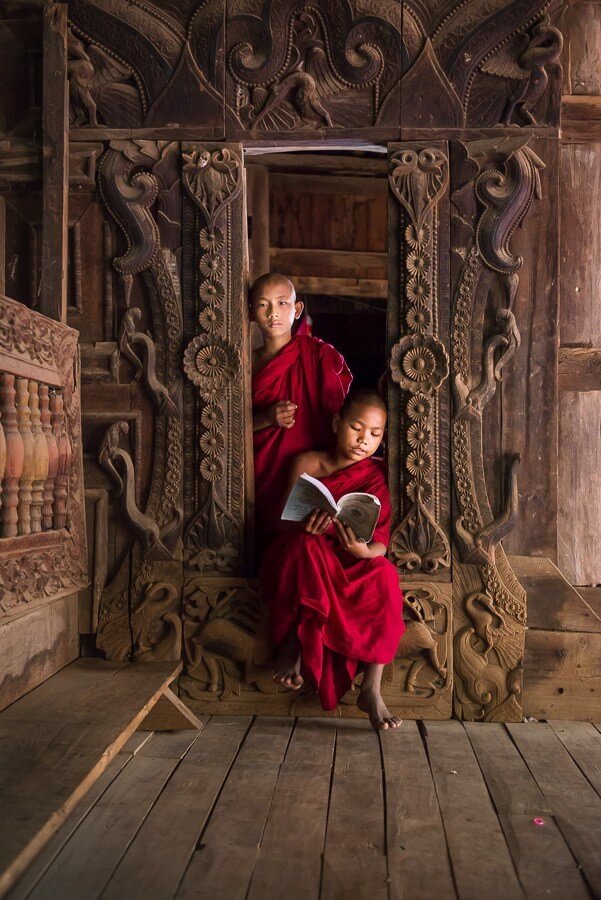
For novice monks, monastery life includes studying Buddhist precepts and teachings. PHOTO: DR. GILAD FISKUS.
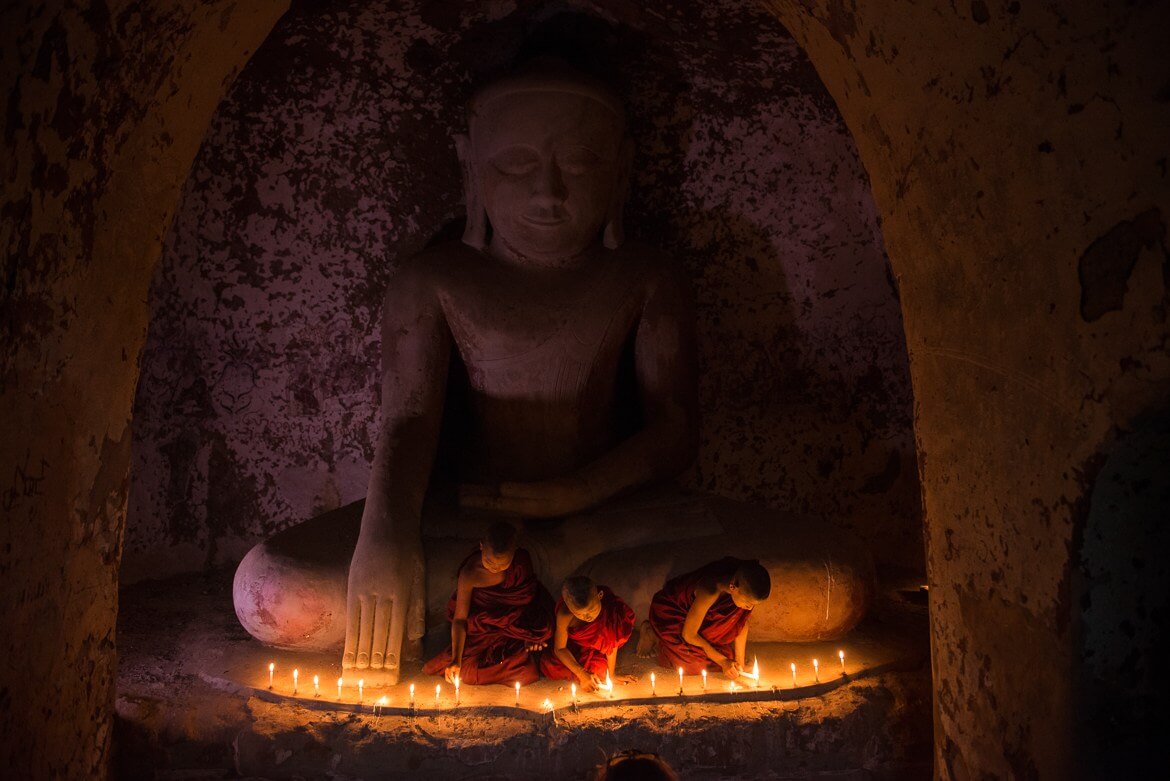
The youngest monks are taught to respect Buddha and his teachings, through rituals around those beliefs, such as lighting candles of devotion. PHOTO: DR. GILAD FISKUS.

By learning Buddhist precepts and following a monastic way of life, monks work toward reaching Nibbana. PHOTO: DR. GILAD FISKUS.
From 8:30 a.m. to midday, they left the monastery to receive alms from the community. There was no festival. Giving and receiving were daily activities. Because the monks owned nothing, they relied on the community to provide for them, and the men and women who resided outside the monastery were as devoted to that task on a normal day as they were at the festival.
Every morning, the monks strolled single-file through town. I watched as they collected spoonfulls of rice and other simple foods. Occasionally, they were given clothing, hygiene products, and money. Both sides gained something from the practice: a step toward Nibbana (or Nirvana, as it is more commonly known) for the donors, and the fulfillment of humility for the monks.
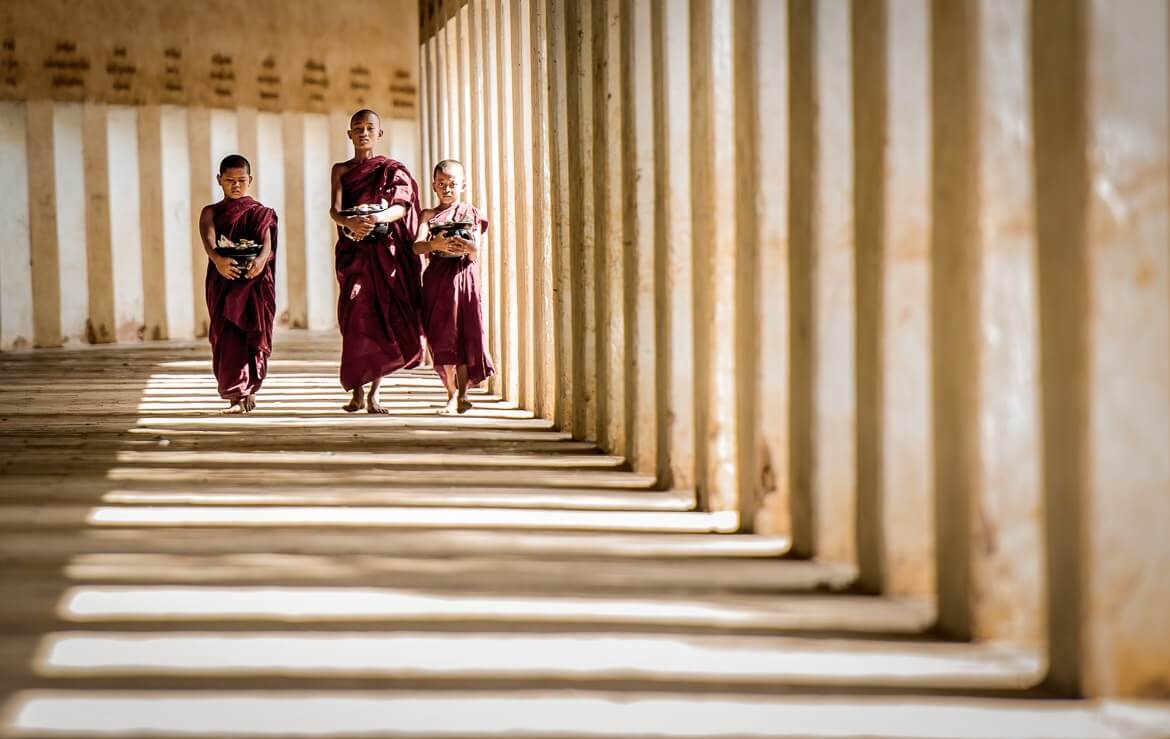
Because monks have limited possessions, carrying alms bowls through the community is a daily practice. PHOTO: DR. GILAD FISKUS.
On several mornings, I carried many 1000-Kyat notes (roughly one dollar) and quickly placed two or three of them in the alms bowls of the monks. My gifts were met the way all alms were: with the modest, silent down-casting of eyes, as if to say we have both earned the opportunity this morning to be better people.
Those moments felt sacred, too.
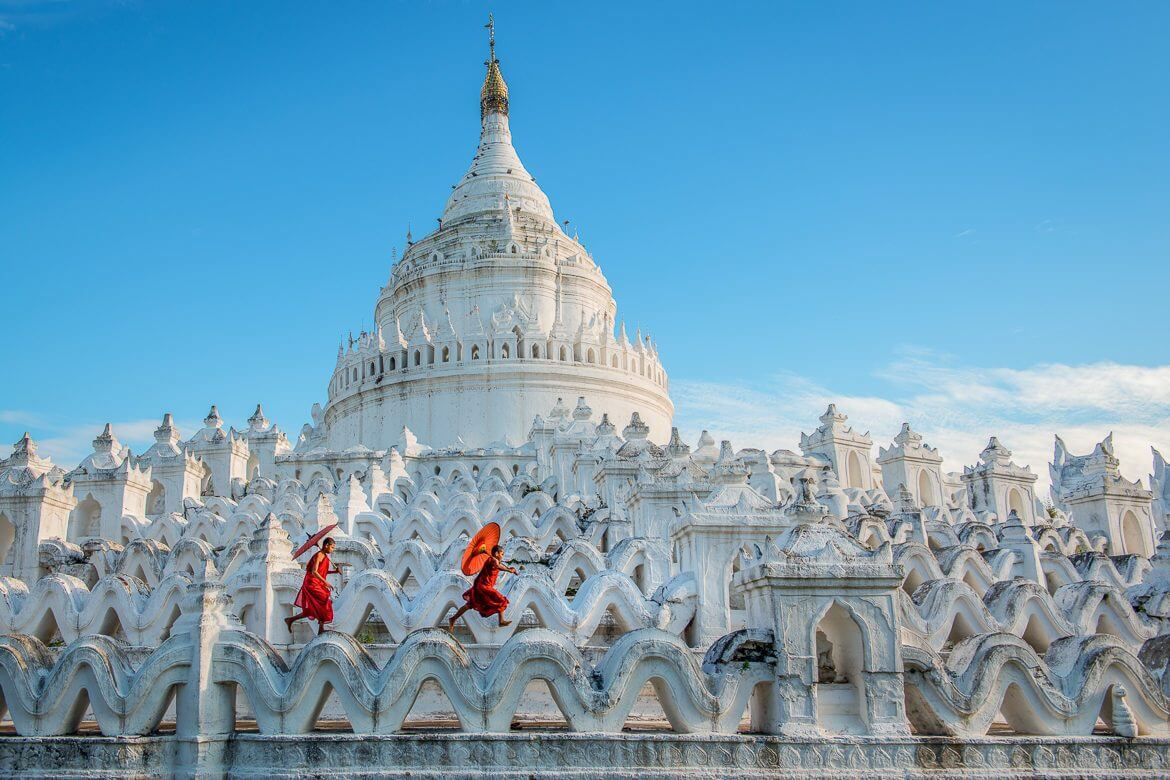
The young monks of Myanmar devote themselves to a monastic life, but at their core they are still children filled with light and laughter. PHOTO: DR. GILAD FISKUS.
Dr. Gilad Fiskus
Dr. Gilad Fiskus is a cultural photographer whose career as a dentist influences the way he photographs people as he travels the world.
Never miss a story
Subscribe for new issue alerts.
By submitting this form, you consent to receive updates from Hidden Compass regarding new issues and other ongoing promotions such as workshop opportunities. Please refer to our Privacy Policy for more information.


